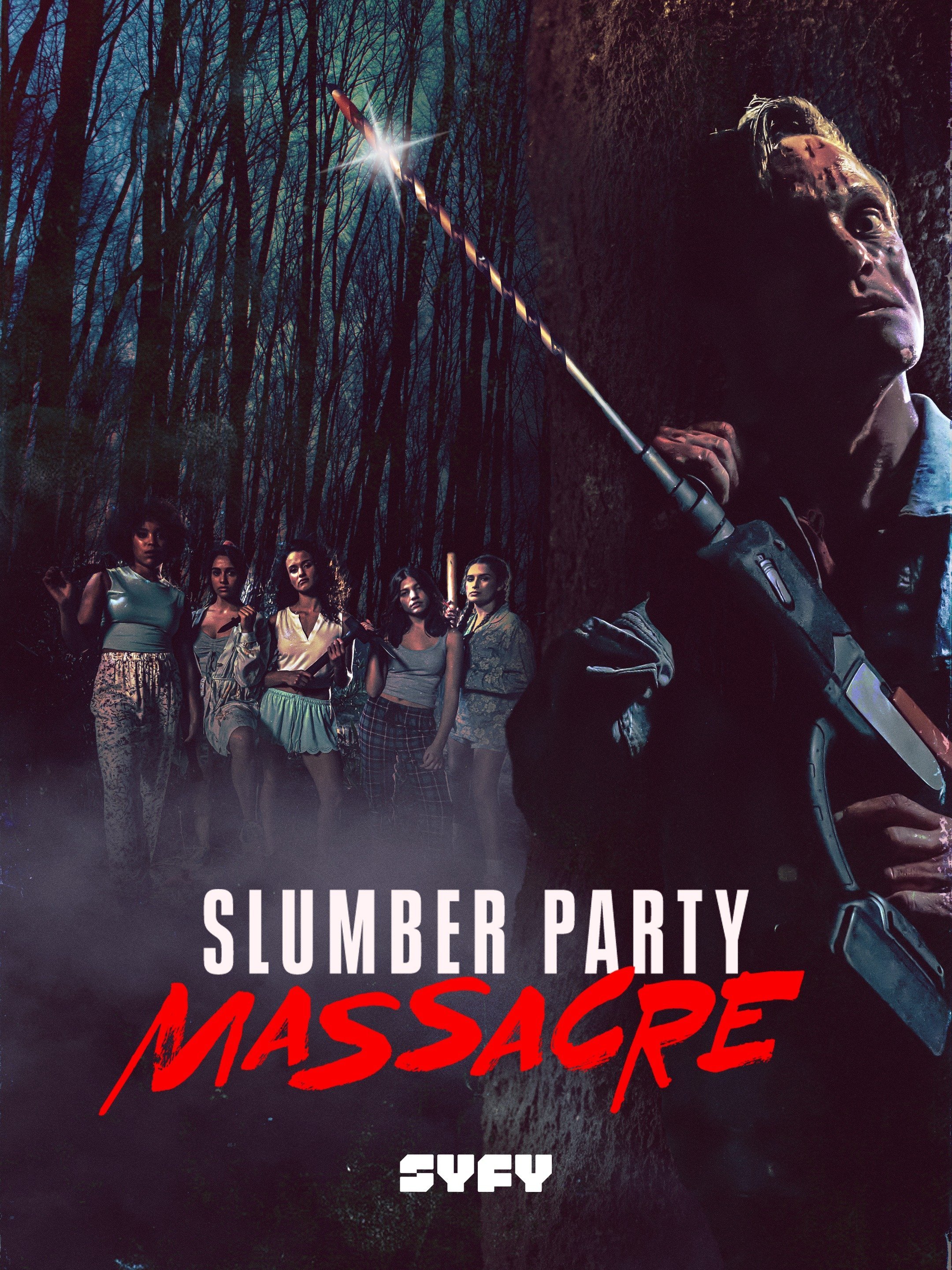The Horror Advocate — The Slumber Party Massacre: What Doesn’t KILL You Will Keep Coming Back
Welcome to our 2nd Annual Birthday Bash as Divination Hollow Reviews!
We’ll be celebrating all month long with a series of posts by our team and esteemed colleagues and this year’s theme is “Going to the Movies!” Join us as we share themed content with special “tickets” for each category inspired by cinema.
Celebrate with us!
The Slumber Party Massacre: what doesn't Kill you will keep coming back
The Horror Advocate
Reimagining Amy Holden Jones’ work sparks a remembrance that a woman’s place — is in horror. Jones managed a trojan horse by turning a slasher into a subversive conversation about safety in numbers, female autonomy, and living with the inevitability of violence. In 2021, Danishka Esterhazy brought this infamous slasher back to life with a relevant update fitting for today's socially strained echo chamber.
A wholly original film at the time, The SlumberParty Massacre (1982) works as a horror comedy that addresses anxiety around the increased visibility of serial killers in American society. The film centers around a girls’ basketball team, and a night of curated terror. In the film, the girls are being stalked by an escaped madman. There is no real motive or driving force known to us other than his thirst for destruction.
Known as the ‘Driller Killer’, he terrorizes and fixates at random, but overwhelmingly attacks women. Jones uses the film to explore the terror of being female in 1982, especially coming off the sadistic reigns of Ted Bundy and The Hillside Stranglers who terrorized the country in the decade prior. The American female psyche was reeling from this reality, suddenly understanding that they were being hunted for being fundamentally themselves. Jones took this realization and worked it out on the screen. Although the female characters are being picked off one by one, there’s still an implicit denial and willful ignorance to the chaos. One of the film’s most infamous scenes sees the pizza delivery man killed and his body sprawled in the common area.
Three of the girls find him and while two of them fret over the situation, one of them is only concerned with whether the pizza is cold because “life goes on after all”. This moment plays out the mental disconnect and naivety that was a popular response at the time to what seemed a surrealistic nightmare only possible on screen. The film acts as a source of reprieve as it allows one to confront the real horrors of life without coming up against imminent real-world danger.
Danishka Esterhazy's remake of the film is a brazen response to the original. For one, the cast is representative of a more diverse culture. There are intentional representations of race and sexuality. This lets a wider range of viewers attach themselves to the scenario— it's saying we’re all in this together. In the original, the girls are presented as naive and so addicted to the fantasy that they can’t sense danger until it is too late.
In the 2021 version, the girls descend upon the scene of an infamous massacre to confront the trauma head-on. The lead character, Hannah, has convinced her friends to go to the site where her mother defeated the ‘Driller Killer’ 28 years ago. His body was never found.
In an effort to explore generational trauma, Hannah intends to ‘get her mother’s life back’ by hunting the hunter and ending the cycle. The film takes the strategy of the original one step further. While the original asks us to pay attention, or see our reality for what it really is, the remake asks us to confront that reality with reckless intention. A message echoed by our current culture wave of facing your truth head-on and pushing through your trauma to the other side.
While the remake is not a slow burn tour de force, it is a poignant moment in horror history, reminding us that safety is not in numbers-- but in taking stock of the past.
Guest Post By Ava M Fields, The Horror Advocate
@AHorrorAdvocate on Twitter





